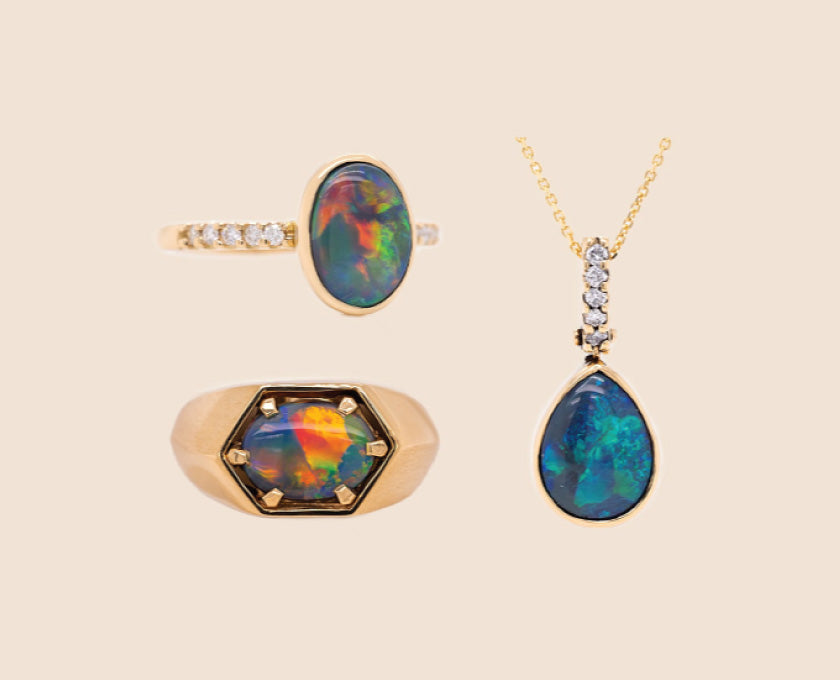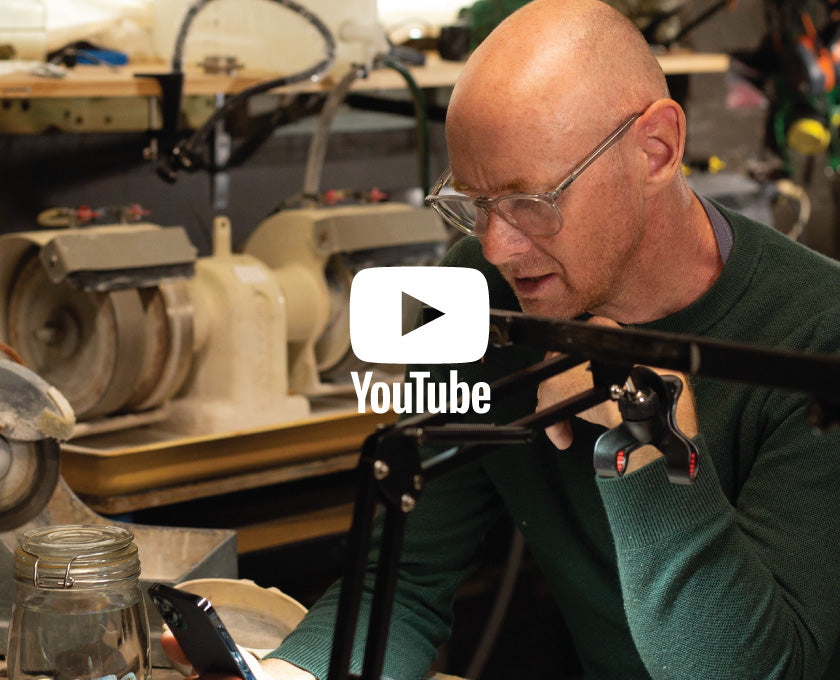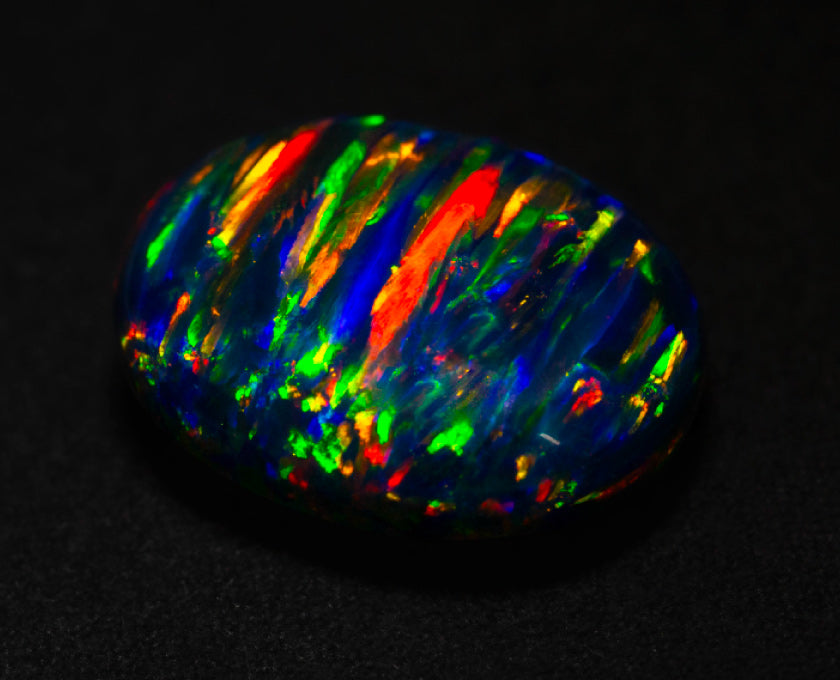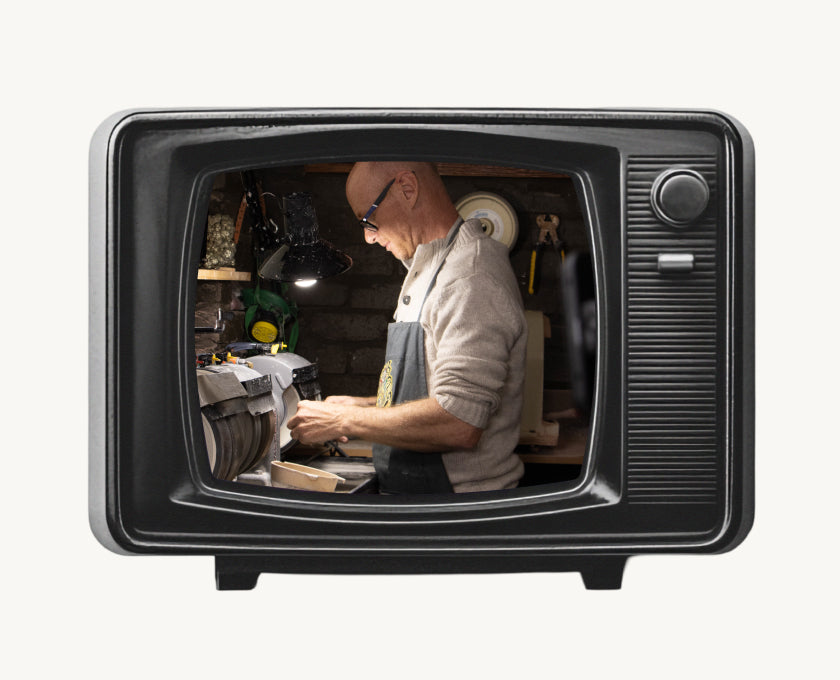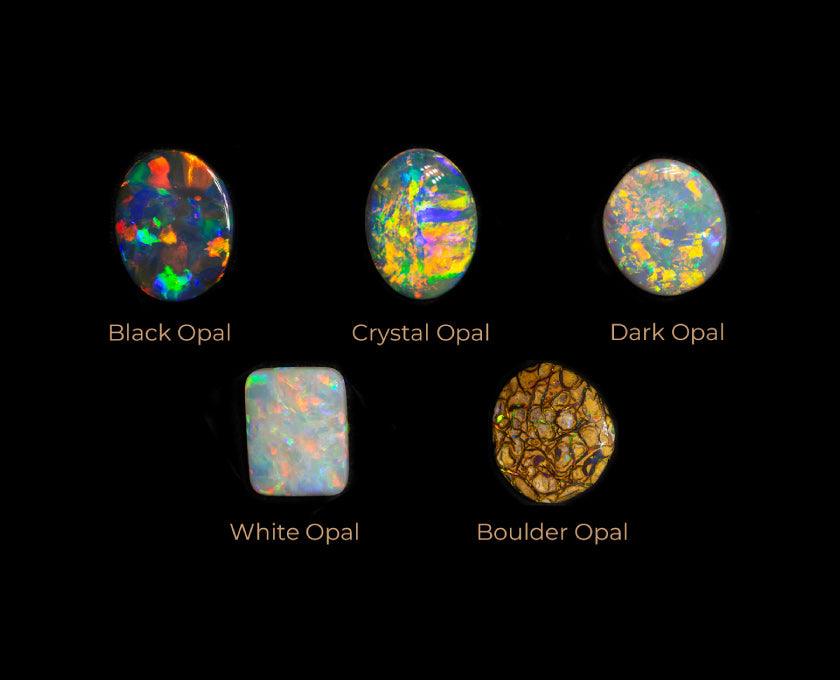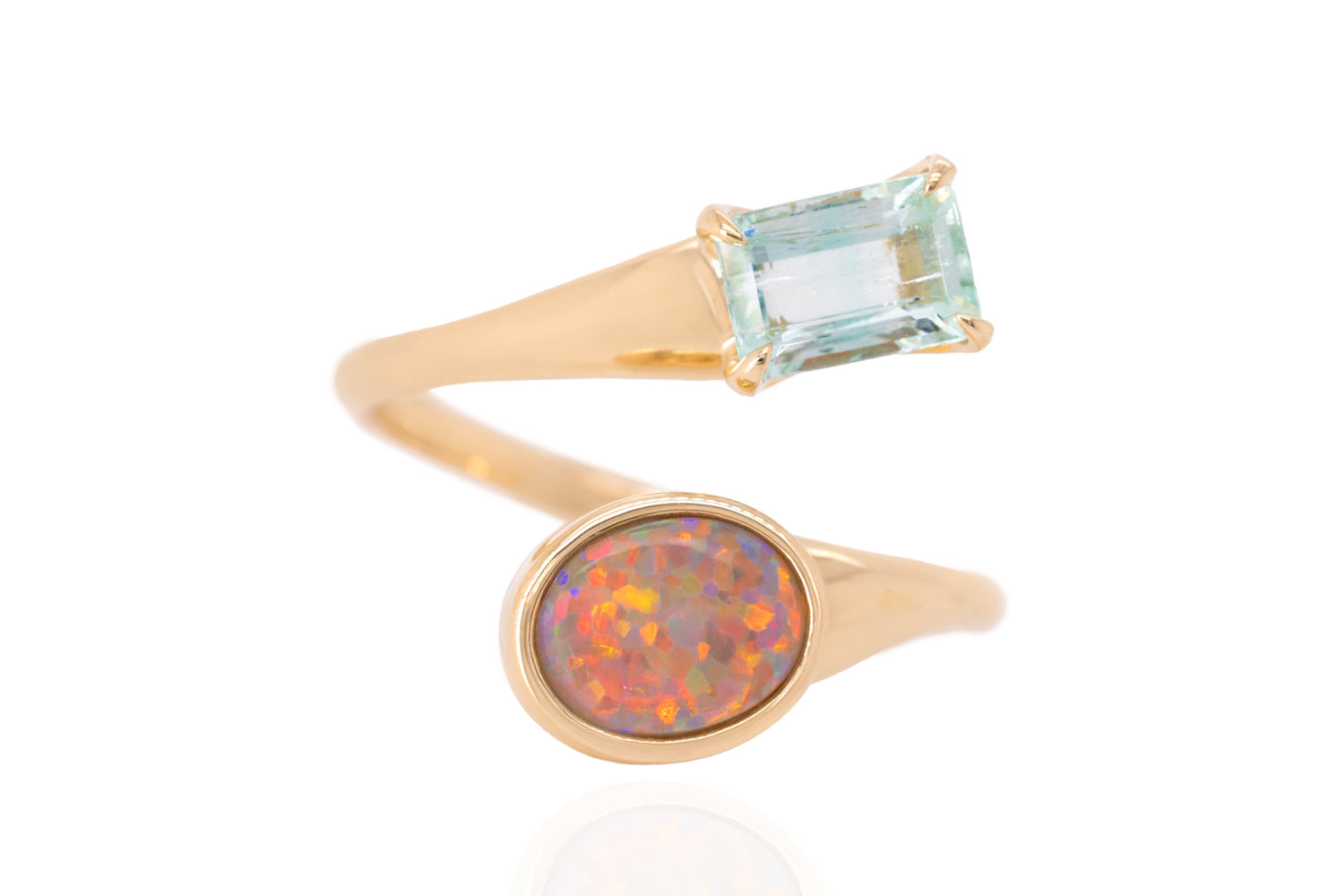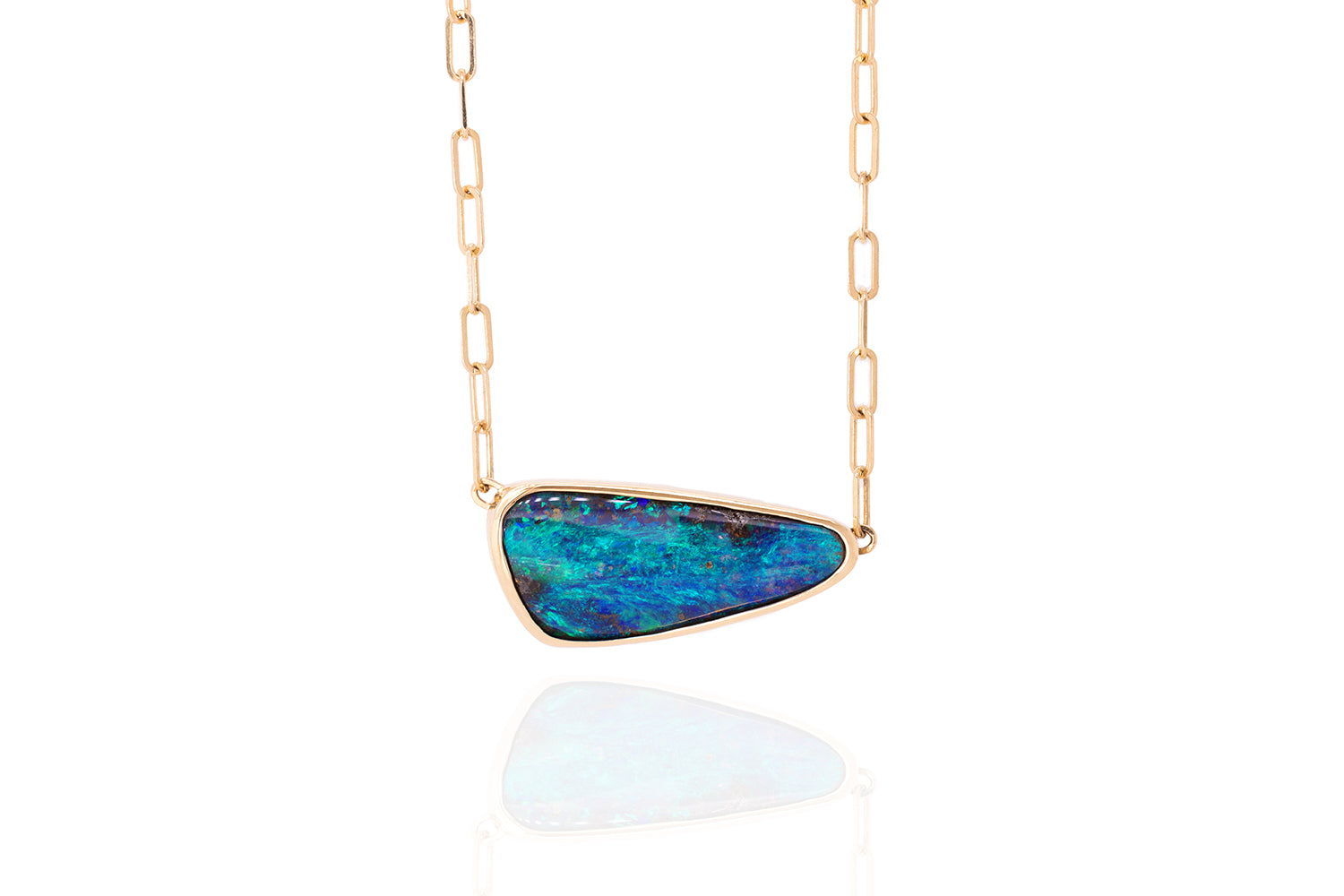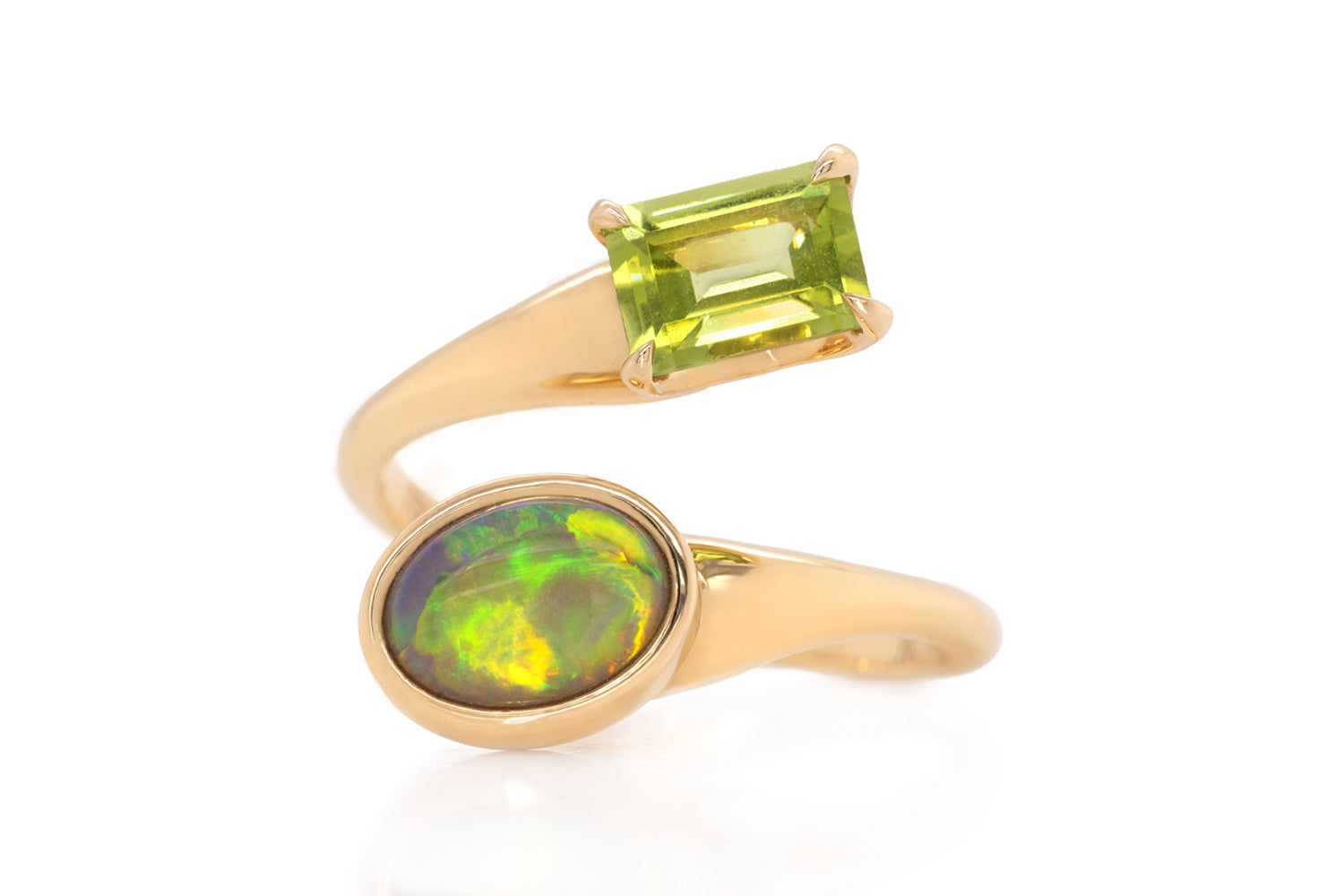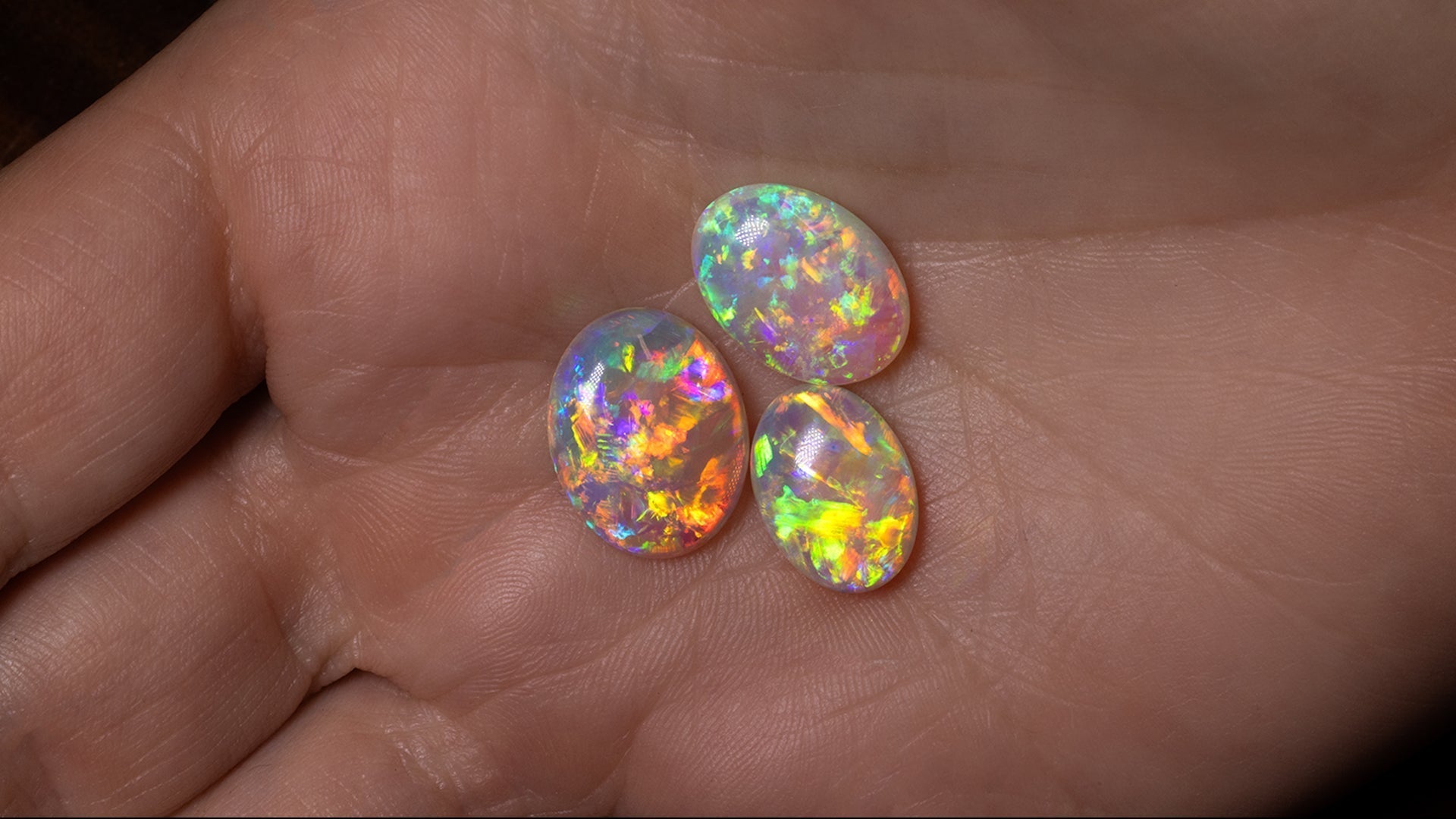Opals are unlike any other gemstone in the world—alive with color, constantly shifting in the light, and each one completely unique. But with so many types, tones, and treatments out there, navigating the world of opals can feel overwhelming. That’s why we’ve created this expert guide to opal gemstones: your go-to resource for understanding what makes these gems so extraordinary, how to tell the difference between the real deal and imitations, and what to look for when choosing the perfect gemstone.
What Is an Australian Opal?
Australian opal is a gemstone formed from silica and water, famous for its play-of-color—the flashes of rainbow hues that dance across its surface. No two opals are ever the same, making each gem as individual as a fingerprint.
Types of Opals
Black Opal – The rarest and most valuable, mined in Lightning Ridge, Australia. Its dark body tone creates a striking contrast for vivid color play.
Crystal Opal – Transparent to translucent, with vibrant color that appears to glow from within.
Dark Opal – With a smoky to deep grey base, dark opal amplifies flashes of color and offers a striking yet more accessible alternative to black opal.
White Opal – Mined mainly in Coober Pedy, Australia, with a pale body tone and subtle pastel flashes.
Boulder Opal – Found in Queensland, with natural host rock visible on the back or within the gem, adding character.
 Read more here: Opal Types
Read more here: Opal Types
Features of an Opal
The varying features of an opal play a big role in its value:
Body Tone: When it comes to opal with potch, the darker the tone, the more colors can pop.
Brightness: How vivid and intense the colors are.
Learn more: Body Tone & Brightness
Pattern: From broad flash to pinfire, harlequin, and beyond.
Learn more: Patterns
Play-of-Color: The range and movement of hues across the stone.
Learn more: Play-of-Color
Carat & Shape: Size matters, but so does the quality of the gemstone's cut and polish.
Opal Treatments & Imitations
Not all opals are as nature intended. Some are treated or imitated:
Composites: Doublets and triplets, which combine thin slices of opal with other materials.
Treatments: Smoked or resin-filled opals designed to enhance color.
Synthetics & Imitations: Man-made materials like Gilson, Kyocera, or plastic cabochons.
Learn more: Is My Opal Real?
💡 Tip: Always buy from a trusted source to ensure you’re getting natural, genuine opal.
Caring for Your Opal
Opals are durable enough for jewelry but do require care:
° Avoid harsh chemicals and extreme heat.
° Store separately to prevent scratches.
° Clean gently with a soft cloth and mild soapy water.
Learn more: Opal Care
Opals are truly the world’s most magical gemstones—formed over millions of years, yet bursting with life and color today. Whether you’re choosing your first opal or adding to a growing collection, understanding the basics of body tone, brightness, and play-of-color will help you appreciate these gems on a whole new level.
✨ Explore our collection of opals and see which one speaks to you—the one-of-a-kind gem that was meant to find you. Happy Browsing!
Read more
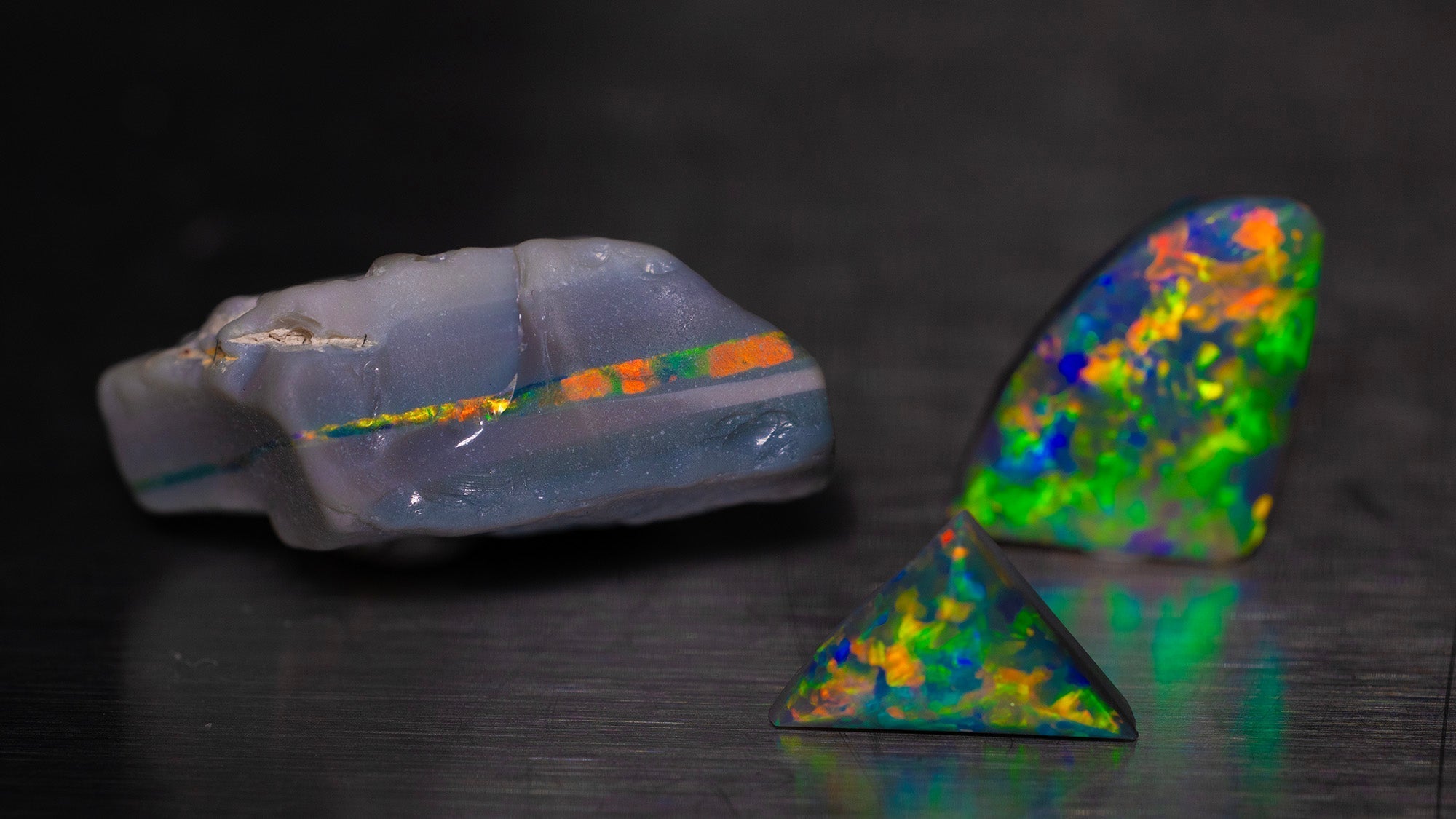
When it comes to opal, there are a few golden rules I live by. In this cutting session, though, I broke one of my biggest: never rely on someone else’s word when buying rough. Breaking Opal Cutting...
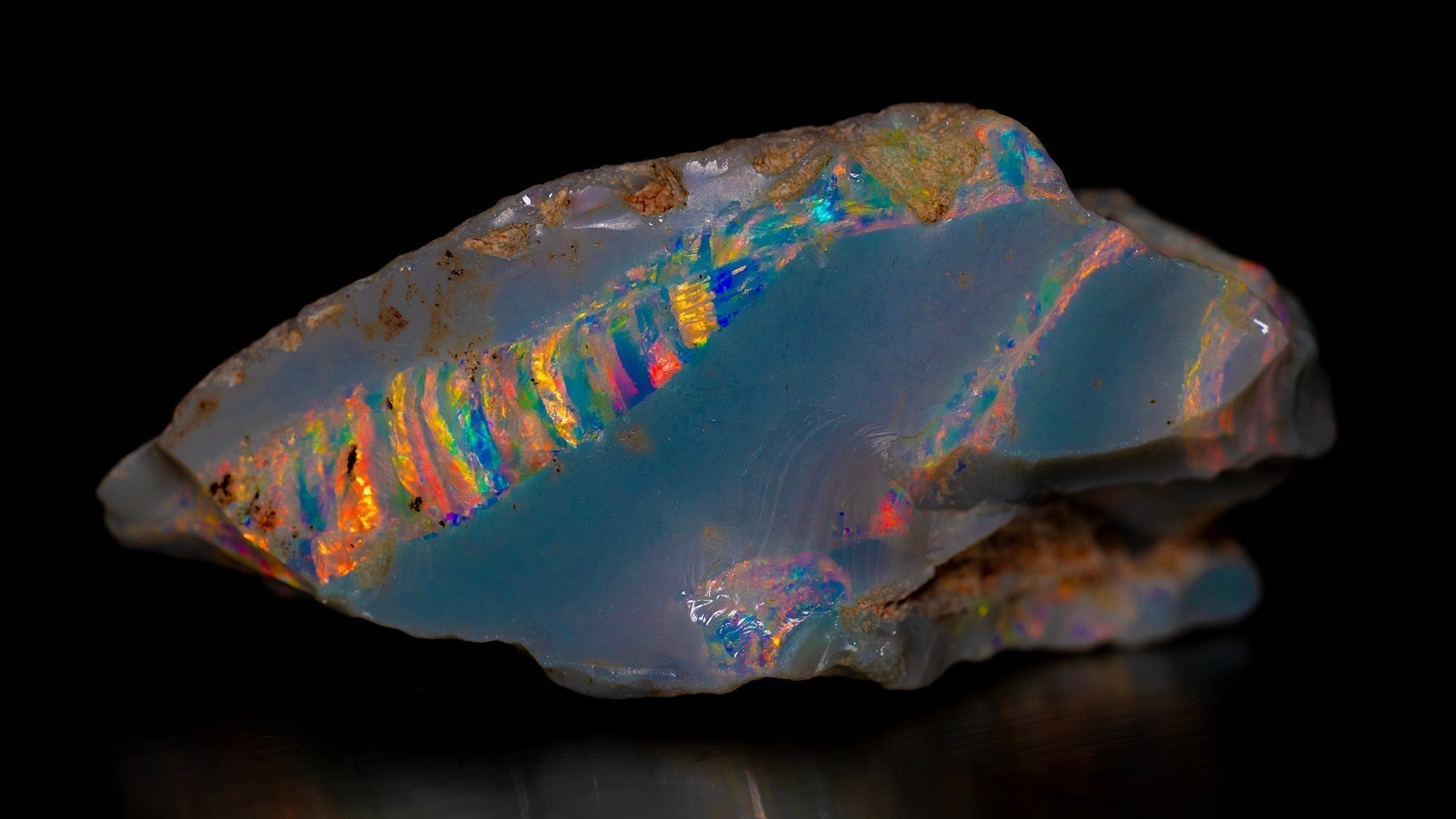
There’s nothing like the thrill of possibility—and the risk—when working with opal. In this cutting session, I found a seam opal with a rare striated pattern, the very same pattern as the rainbow ...

